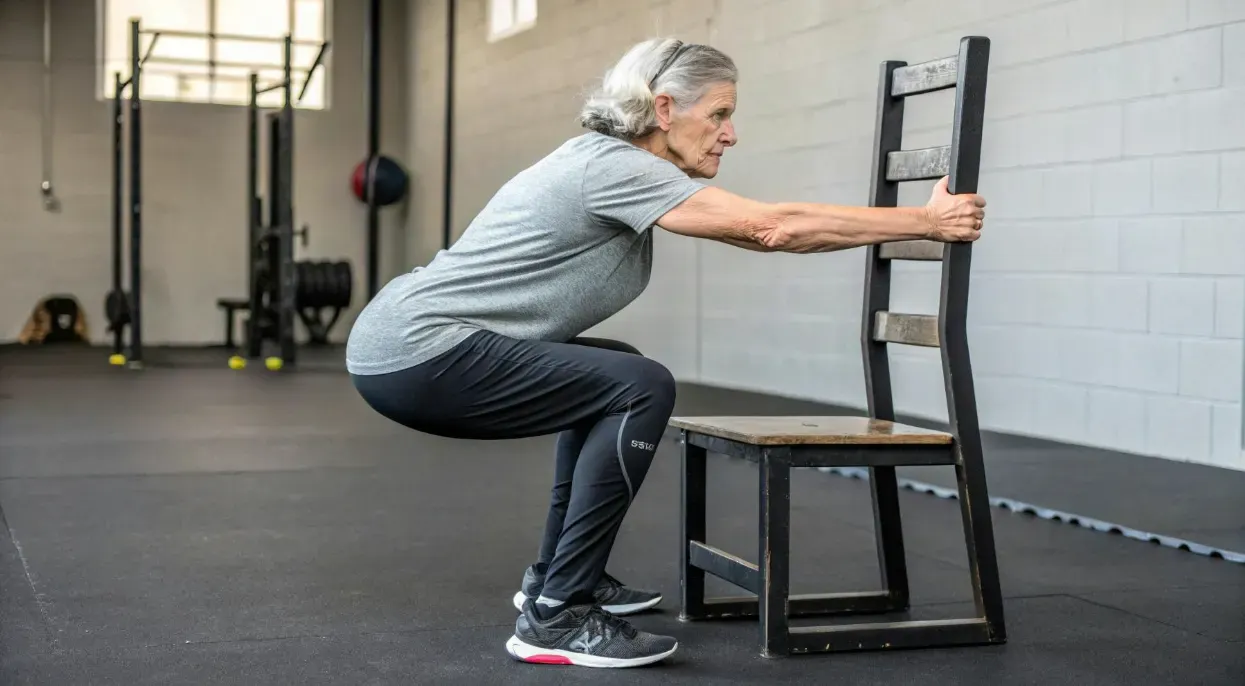3 Daily Exercises Everyone Over 50 Should Be Doing

When it comes to aging well, movement isn’t optional — it’s essential. Strength, mobility, and joint health naturally decline with age — but daily, intentional movement can dramatically slow (or even reverse) that trend.
Whether you’re 50 or 75, these three daily exercises can help you maintain independence, reduce pain, and improve how you move — every single day.
Why These Movements Matter After 50
As we age, the body tends to get tighter, stiffer, and weaker — particularly in the hips, shoulders, and spine. These areas play a critical role in walking, lifting, reaching, and even standing upright with confidence.
Rather than trying to hit the gym hard or run miles, what most over-50s need is a smarter approach: functional mobility work that restores flexibility, maintains strength, and prevents joint wear.
These three exercises were handpicked because they target the most commonly restricted movement patterns — and require no gym, no equipment, and just a few minutes each day.
1. Sit Back Squat: Restoring Hip, Knee, and Ankle Mobility
What It Does: Full-Chain Stretch for Daily Function
This isn’t your average gym squat. The sit back squat — performed while holding a sturdy object — stretches and activates multiple areas:
- Lower back: decompresses and loosens tension
- Hips and glutes: opens tight hip joints
- Knees and ankles: encourages healthy bending patterns
- Quads and calves: engages without overloading
It mimics movements like getting in and out of a chair — one of the most important real-life strength tests as we age.
How to Scale It: From Standing Leans to Full Squats
Beginner: Hold onto a countertop or the back of a sturdy chair. Lean back gently, keeping the spine neutral, and just let the hips shift backward. This decompresses the spine and lightly stretches the hips.
Intermediate: With a slight bend in the knees, lower your body further toward a squatting position, rounding the back slightly if comfortable. You’ll feel a deep stretch in the glutes, quads, and calves.
Advanced: Drop into a deeper squat, using the support to keep balance. Shift your weight, pulse gently, and hold for 20–30 seconds. Two to three minutes a day can lead to real mobility gains.
2. Overhead Reach: Improve Shoulder and Mid-Back Flexibility
Why Over-50s Lose Overhead Range
As posture deteriorates with age (think rounded shoulders and stiff upper backs), the ability to reach overhead can disappear. This limits everything from reaching a cupboard to proper walking mechanics.
The overhead reach exercise restores:
- Shoulder flexion (ability to raise arms high)
- Thoracic spine mobility (upper back extension)
- Postural awareness
Progressions: Wall Walks, Nose-to-Wall Lifts, and Posture Tips
Beginner: Stand with one hand on a wall. Slowly walk your fingers upward until you feel a stretch. Stop at the edge of stiffness — not pain — and gently lean into the wall for a few seconds.
Intermediate: Once the shoulder can reach higher, try to get your nose close to the wall. With posture engaged, gently lift the hand off the wall for a few seconds, then replace.
Advanced: With your nose touching the wall, lift your arm completely off while keeping your core engaged and glutes slightly squeezed. This builds strength, stability, and better joint mechanics.
Do 5–10 reps per arm, pausing at the top.
3. Hip Rotation: The Unsung Hero of Joint Longevity
The Importance of Hip Rotation in Gait and Stability
This is the movement almost no one trains — and it’s one of the first to go as we age. When hips stop rotating, it affects walking, balance, and can increase the risk of falls or hip degeneration.
Training hip rotation daily:
- Preserves cartilage and joint integrity
- Reduces fall risk by improving joint control
- Strengthens neglected muscles in the hip capsule
How to Train It: Lying Rotations, Internal vs. External Focus
How to Perform:
- Lie on your back with one leg bent (90 degrees at hip and knee)
- Keep the leg still, but rotate the shin side to side
- Inward (medial rotation): bring the shin across the body
- Outward (lateral rotation): move shin away from body
Do 10 slow, controlled reps in each direction. You may find one direction tighter than the other — that’s your sign to focus on that range.
Tip: Most men tend to lack internal rotation, while women often do better here. Regardless of sex, this exercise helps everyone.
Final Thoughts: Movement Is Medicine — But It Must Be Consistent
These three exercises take under 10 minutes combined — but the impact they can have on your strength, flexibility, and long-term mobility is massive.
You don’t need to work harder. You need to work smarter — with movements that address the real challenges that come with aging:
- Tight hips
- Weak shoulders
- Stiff spines
- Painful knees and ankles
Start small. Do what you can — pain-free. Over time, these exercises build confidence and capacity. And more importantly, they help you move well, live well, and stay independent for years to come.
References
- https://pmc.ncbi.nlm.nih.gov/articles/PMC10535169/
- https://pmc.ncbi.nlm.nih.gov/articles/PMC8079972/
- https://pmc.ncbi.nlm.nih.gov/articles/PMC10357808/
